Disclosure: Meeple Mountain received a free copy of this product in exchange for an honest, unbiased review. This review is not intended to be an endorsement.
If you’ve had the chance to read any of my previous Mindclash Games coverage, you probably think I’m a fanboy…and, you are right.
Mindclash has put out a bevy of bangers, including Anachrony, Trickerion: Legends of Illusion, and the granddaddy of them all, Voidfall. I wanted to try the 2022 release Perseverance: Castaway Chronicles Episodes 1 & 2, so I reached out to the Mindclash team to grab a review copy and I spent about a month working through both episodes.
The format is wild. Perseverance is a four-game series that will wrap up with a third and fourth episode later this year, so I wanted to get in now to ensure I know what’s going on when the new games are delivered to backers. Players take on the roles of leaders stranded on a remote island in the present day that also happens to be inhabited by dinosaurs. By the end of Episode 4, I’m guessing Perseverance (the name of the game’s deserted location) will be a full-blown city where dinosaurs and humans are living side-by-side, working together to further a shared way of life.
The backstory is richer than that, so while I’ll talk about both episodes in the first box, I won’t talk about the things that Mindclash always does better than essentially all other publishers making “big box” / expensive games nowadays…the production:
- The rulebooks are excellent
- The miniatures are solid
- The storage solution is comically great (as in, I was laughing as I put the game away after my fifth and final review play because everything fits back in the box so perfectly)
- The artwork and iconography shine
- The main shared map boards, despite being a bit too busy, look great and clearly lay out how things work
- The journal detailing one woman’s journey from cruise ship passenger to island survivor (the game’s Art and Story Book) is completely unnecessary…which naturally means it is amazing
Just know that when it comes to look and feel, Mindclash did it again with Perseverance. With that, let’s talk about the two Episodes.
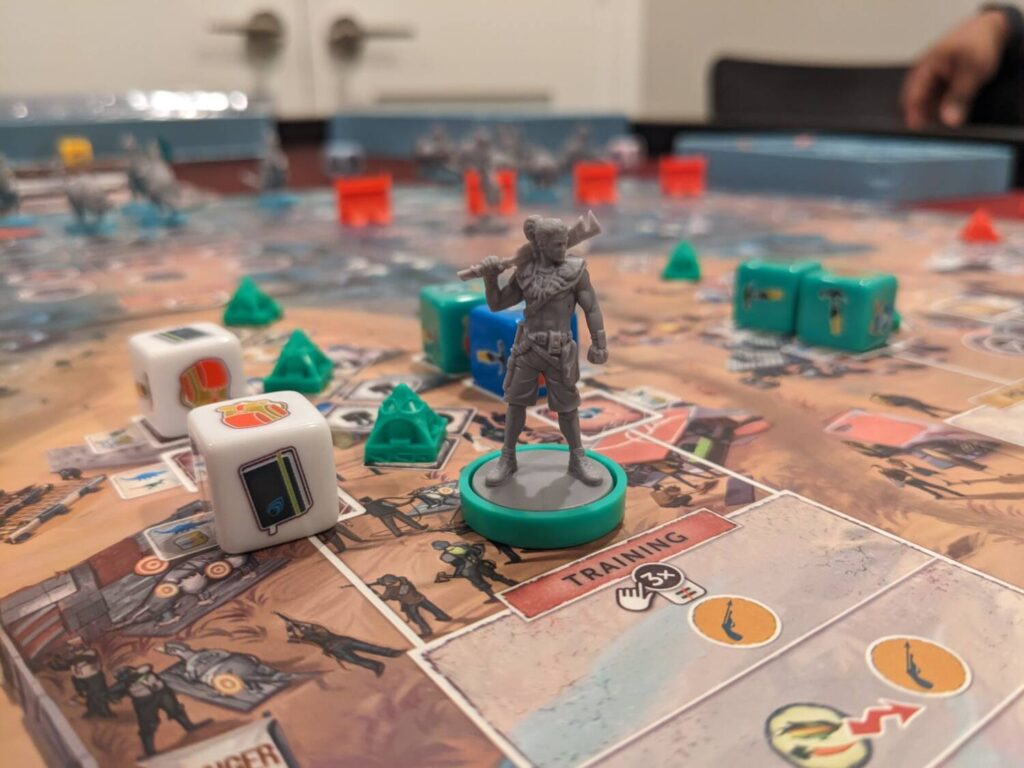
Episode 1—Are You Lost?
The world of Perseverance in Episode 1 isn’t quite a world, really, when players arrive. It’s more like the camp from the TV show Lost, one of many pop culture references that likely inspired the world of the game.
It’s the year 2020. About 1800 people were on the cruise ship The Pearl of the Seas when the ship’s navigation systems were knocked out by a strange weather event, forcing the crew to move everyone to a nearby island somewhere in the Caribbean Sea. Once the ship’s senior crew members moved the survivors to the island, factions began to form. These factions were led by some of the playable leaders involved in the game.
In Episode 1, players are tasked with two main responsibilities: gather enough resources to keep survivors (known as Followers) alive, and keep the island’s original inhabitants—dinosaurs, in the form of Raptors and Tramplers—from destroying the camps where Followers are beginning to build their burgeoning community.
In a thematic nod to what it means to win when leading strangers on a deserted island, victory points in Perseverance are the Followers—the more you have, the higher your standing within the overall community. Both episodes are dice drafting, area control games with very deterministic combat driven by moments when dinos try to make trouble for everyone involved.
Across four Community areas—each with a matching zone that has to be defended, to keep those pesky dinos out—players will take turns selecting dice from a common pool to take one primary and one secondary action. When the dice run out, an Assembly is held, where players consider total area control of each Community. The player who has the most presence in each Community is awarded the choice of either votes (helpful to score a handsome scoring bonus that grows with each Assembly) or resources. Second-place finishers in each Community get half of the option each winner does not take, which then forces everyone to make careful decisions to ensure they get the votes/resources they need without giving up too much to an opponent.
Depending on player count, two or three Assemblies are held before the game ends. You’re only getting about ten main turns (which could be 20-30 actions, depending on combos) for the entire game. That sounded like a lot, but that didn’t lead to long playtimes with Episode 1. My games took about 30-40 minutes per player, so even my three-player game (with two new players) only took two hours.
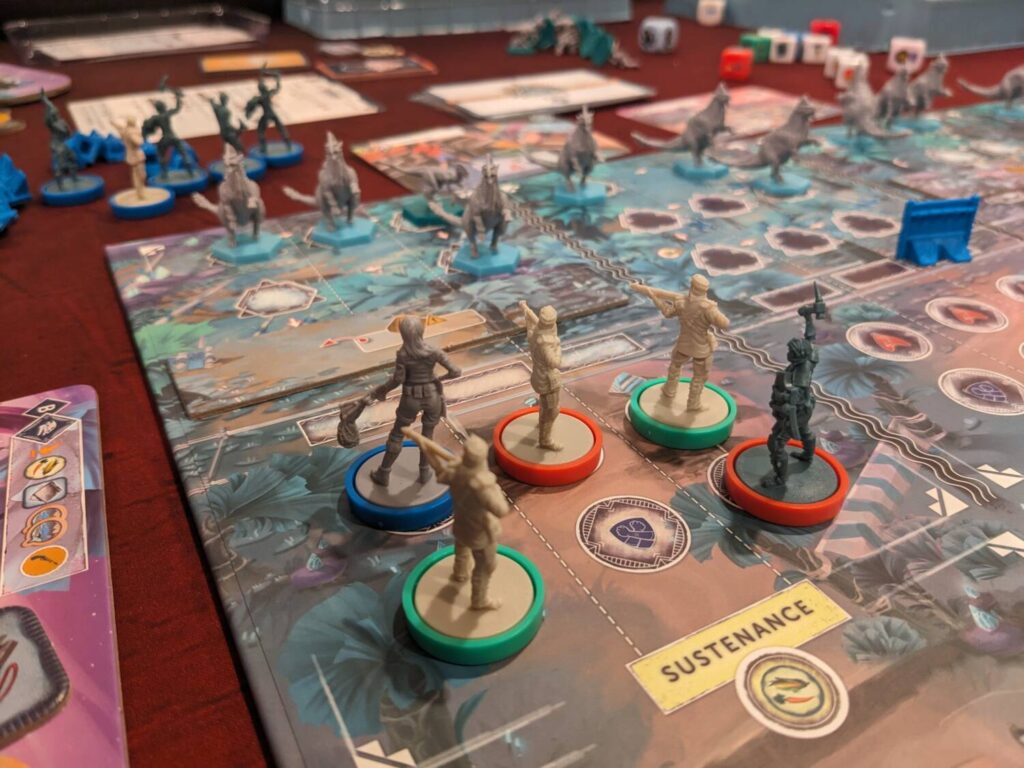
Solo play in Episode 1 uses a two-handed dummy mechanic called The Dissenters, where players manipulate two other factions using an automa deck to help simulate opponents. I’ll summarize my thoughts on solo right now: I wouldn’t buy Perseverance for the solo mode. Like another Mindclash release, Septima, Episode 1 has a ton of upkeep, particularly in solo mode. The real miss comes with how the Dissenters select locations to play dice. In multiplayer, I found that players never select a zone that is about to trigger a dino attack because of how this affects scoring (generally, it’s bad to trigger an attack in a zone where lots of dinos will breach defenses if a lot of them will get through). In solo, the AI doesn’t seem to consider that.
Otherwise, the solo is fine…it’s just not as dynamic as the multiplayer, so I did a single play of the solo modules and moved on.
Before I continue, it is helpful to know a bit about my play preferences. Any time the words “dice drafting” are used in a sentence, I’m at least 75% down to try any game where dice drafting is the core turn mechanic, no matter how good or bad a game might ultimately be. Tiletum was the best game I played in 2022, in part because I could stare at dice deciding which one is right for my upcoming turn for hours. Grand Austria Hotel, Coimbra, Black Angel, and The White Castle are all excellent designs, but they really shine for me personally because of the inclusion of dice drafting mechanics.
Mix dice drafting with area control—another of my favorite mechanics—and Perseverance, on paper, should be a home run for me. Layer on some of that Mindclash production, and I had very high hopes for the first episode after reading the rules and watching a video overview.
In execution? I really like Episode 1, but not necessarily for the reasons I expected. That starts with the dice drafting, which is a bit of a mirage.
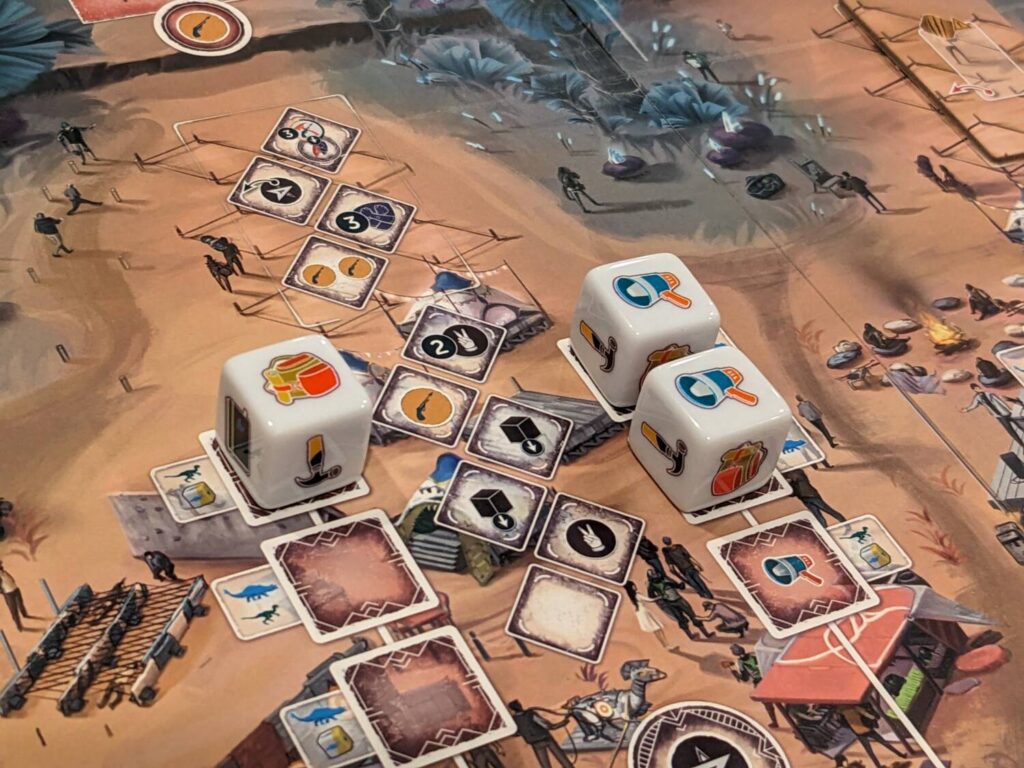
The Die Faces Don’t Really Matter
On a turn, a player selects one of the dice left in the general pool. This is the primary action listed on the player aids, aids that are the best ones Mindclash has ever produced. This dice pool is scaled up based on player count but the pool always has a mix of plain white dice (no penalty for their use) and player-controlled dice (free for that die’s owner to use, a negative two-Follower penalty if anyone else who uses them).
First issue—the “penalty” for a player using another player’s die. In a design where scores ranged from the low 80s to the high 160s across my games, I’m not sure an occasional two-point penalty is really going to sway a player from using another player’s die. Near the end of rounds, when only one or two dice are left, you are likely going to be forced to choose another player’s die anyway. Not once did a player openly regret the use of an opposing player’s die.
There’s an action that allows for players to get more of their own color dice into the game (Politics), and because dice play into the area control scoring of a Community during Assembly scoring, getting more dice on the map ended up being very juicy in my plays. But the upfront die selection penalty feels like an extra that could have been skipped.
The dice are six-sided, with four different symbols spread across the dice. Once a die is selected and placed in a community, 1-3 dinosaurs are added to the area outside of that community. When the last space in that dino zone is filled, a dino attack is triggered at the end of that player’s turn. After dinos are added, players then execute an action—getting more soldiers by training survivors, gathering resources, building walls and dino traps that can help defend each Community, and a host of other things.
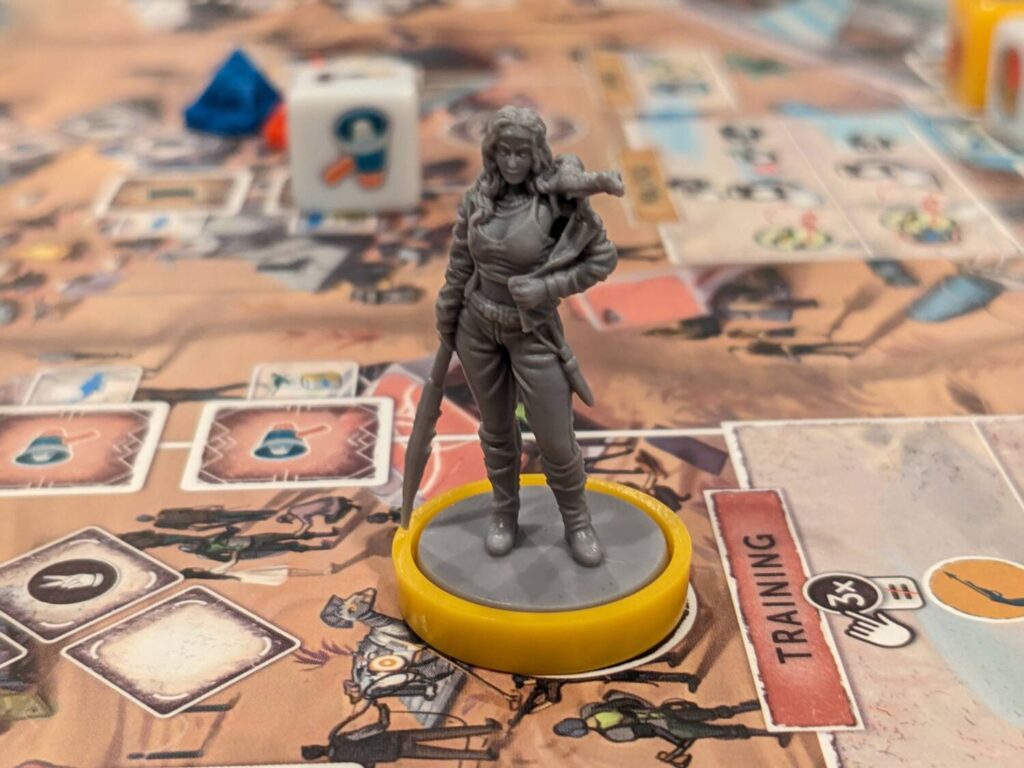
All of those choices are straightforward, although there are a few “get XYZ resources” spaces that feel like a trap…I don’t think you can take the “Rations” action, to gather two food resources, as a stand-alone action and play “winning football”, to paraphrase a popular sports analogy. In fact, Rations and the other spaces like it that grant two resources in a zone feel like actions you would only take if there are truly no other options left.
But there are certainly plenty of spaces for dice, and getting the die face you want feels pretty easy because one of the game’s three resources (Stories, which I love as a spendable resource) allows a player to change a die to any face.
A second, minor issue with the primary action—dice drafting has almost no drama. Let’s use Tiletum as an example, mentioned earlier. I’ve done plays of Tiletum where my choice of a die late in a round led to outright cursing by other players at the table. Grand Austria Hotel? Probably even more angst from my opponents. But in Episode 1 (and this gets a decent facelift for Episode 2), there were zero moments where an opponent looked at the dice pool and found themselves strapped without things to do.
Ultimately, I am OK with this. That’s because the secondary actions are so good. Each player has a Leader who can use a space in any Community area to take any action in that zone, as long as the Leader space is open. Leaders can also be used to fight dinosaurs. There’s a second area control element tied to influencing the officers from the ship, one of whom is aligned to each zone to curry favor and provide some additional Follower points during Assembly scoring. You can always influence an Officer a tad for free, or more by spending Stories to get more cubes onto an officer’s tile.
Overall, I enjoyed Episode 1 as a lighter, quicker version of what was coming next.

Episode 2—Beyond the Sun, Over the Tech Trees
Episode 2 uses many of the same rules from Episode 1. Players still operate as the leader of a faction of Followers in the four communities used in the base game. Players still take primary and secondary actions, fight dinos, and try to gather the most votes during each Assembly. Actions are still driven by a dice drafting mechanic, with area control being an important part of how Assemblies will score.
But…BUT…Episode 2 is harder. Heavier. Most dramatically for my game groups, Episode 2 is longer. And while I think it’s a better game than Episode 1, it is too much longer for me to say I would get it to the table regularly.
That starts with an expanded player board. That board is essentially a tech tree, where players get to earn “Perks” with the five officers in this Episode (the four from Episode 1, plus a Captain). Each Officer can be influenced through a variety of actions, and each Officer has six Perks to choose from. That means that there are 30 different bonuses you can earn through your player board, and the matrix is presented in a way that gives everyone a chance to chart their own path for each game.
The tech tree in Episode 2 is fantastic. As a huge fan of games like Beyond the Sun, I love the elements of specialization here and it’s fun to both focus on getting all six Perks from a single Officer, or to mix and match to line up with the actions you want to lean into most. And I really like that the tech tree is the same for each player, so that you can feel out what everyone else has unlocked from around the table at a glance.
Other changes from Episode 1 also sing, such as the way dino battles are handled (easier, much more predictable) and the way exploration elements are executed, with a fog of war cast over areas of the new “Discovery” zone where players can set up camps to hunt dinos or defend themselves from dino attacks.

The Discovery area expands the dice placement areas by allowing players to build outposts, which serve as both defensive strength against dino attacks as well as new dice placement locations with some very juicy options for players to use for their actions. Because dice in a player’s colors also help with area control scoring during Assemblies, this means that players will always have an incentive to take these new actions. There are 20 Outpost tiles in the game, so each play will always have different actions to change the scope of play.
One other positive change that I enjoyed—the fact that it felt like getting the die faces I needed to take the right action was a bit harder for taking the actions in the City (formerly Community) locations. I wouldn’t say that the tension ramped up significantly there versus Episode 1, but I did find myself keeping an extra Story token around just in case I needed to change a die face more in my plays of Episode 2. I still think the penalty for using another player’s die is too low, but you still need the right die face to take certain actions.
Beyond the longer overall playtimes, the other thing that I didn’t love about Episode 2: the longer downtime between turns. Even at three players, the fact that everyone gets a primary action and more involved secondary action means that downtime is significant, particularly in later rounds. There were times during my three-player game of Episode 2 where I would finish a turn then grab food, then come back to find that the current player was still taking actions.
There’s a lot more to consider in Episode 2. Across my five plays of Episodes 1 & 2, I did solo, two, and three-player games but no four-player games…and, I’m not going to play Perseverance at four. I just don’t want to wait the 8-10 minutes between turns, despite how much I love the systems on display here.
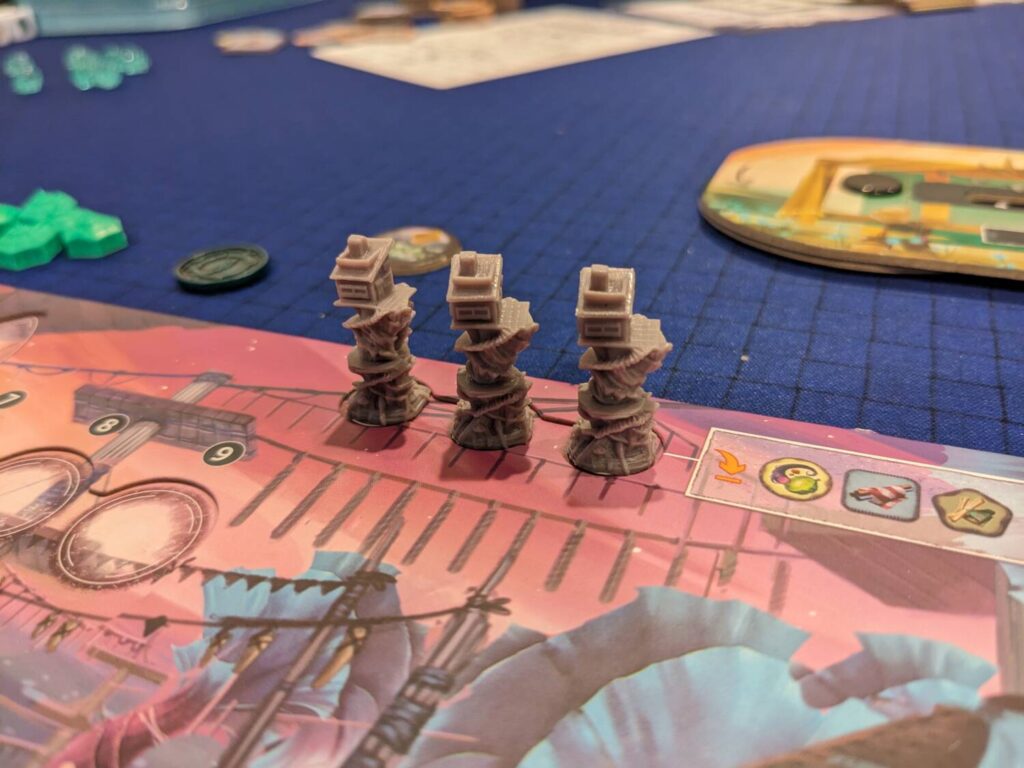
The Verdict
Perseverance is a good time, and frankly a relief after my plays of last year’s Septima. I like the worldbuilding in Perseverance, and the two episodes are an incredible package for lovers of heavier Euro-style designs, particularly if area control games are your thing.
The production is spectacular, which is par for the course with Mindclash. I’m really curious to see if the design team (Viktor Peter, David Turczi, Richard Amann, Thomas Vande Ginste, and Wolf Plancke) is going to be able to find a way to make Episodes 3 & 4 both more interesting from a strategy standpoint, and more streamlined, to bring the overall playtime down. As it is, I’m a little worried that the next two games will be more difficult to parse, which might boost the playtime to a place I’m already not that excited about!
Episode 1 features turn-taking that I really liked, once I understood the system well enough. There’s always something to do, even when spaces and dice become tight. There’s plenty of interaction, between staging soldiers to defend against dino attacks (triggered when a zone becomes completely full of dinos on a community’s perimeter), taking a Leader space late in a round before another player thinks to do that, or trying to have a hand in each Community’s area control elements to score at least second place each time, which might lead to a nice mix of free resources, votes, and/or Followers based on a second- or third-place finish during an Assembly.
I loved the chance at having clever turns occur naturally during the game. You’re going to have 2-3 moves where you walk into a nice combo and things all work out. This was especially satisfying for myself and other players thanks to the dino attacks and rewards system.

I initially doubted that a player could win by only pushing into one end of the game’s systems or the other…in this case, going hard on the area control/Assembly elements versus dedicating your game solely towards dino combat, defense, and rewards. While a mixed approach would certainly work well, I liked the balance of seeing players score 125+ points using a political approach and doing the same, if not more, by going hard on a military angle.
Some of the elements in Episode 1 didn’t work for me, particularly the ones previously mentioned regarding a lack of tension with the dice drafting mechanic. In addition, I thought player powers for each faction were not interesting (the “B” side player boards in Episode 1 fell flat) and even players that take a political approach are going to eventually need to go on patrol using a card system that rewards players with somewhat significant rewards at the end of each turn when they have a Patrol card in play.
Episode 2 does more things that I enjoy in games like this, and the tech tree is the reason I will come back to play it again. My main concern with Episode 2 is the player count; at three players, it is just long enough that I worry about the constant “is the juice worth the squeeze?” debate I’m always playing in my head regarding the length of each play. But the dynamic nature of the dice placement spots, the way map discovery works, and the increased limitations on die face requirements led to a nice amount of tension in my plays of Episode 2.
If I had to pick just one of the games, it would be Episode 1. As much as I love the design of Episode 2, it’s a big piece of chicken, and my three-player games of Episode 2 run into three-hour territory, and with a somewhat involved setup, that’s a four-hour night. For me and my schedule, that’s harder to get to the table. Episode 1 has slightly less in terms of bits and the game moves a little faster. The decisions are still interesting and the area control is still tense.
Both episodes form a solid package and I’m excited to see what’s next. Perseverance lands in the upper tier of Mindclash’s designs so I am looking forward to Episodes 3 & 4!


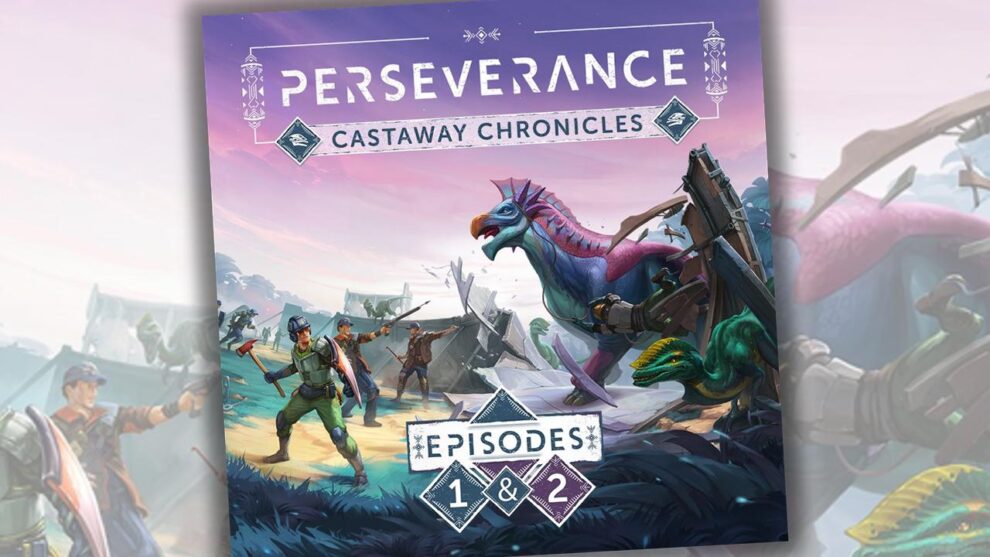
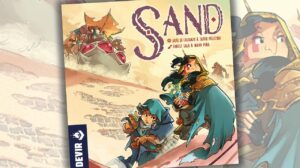







Add Comment